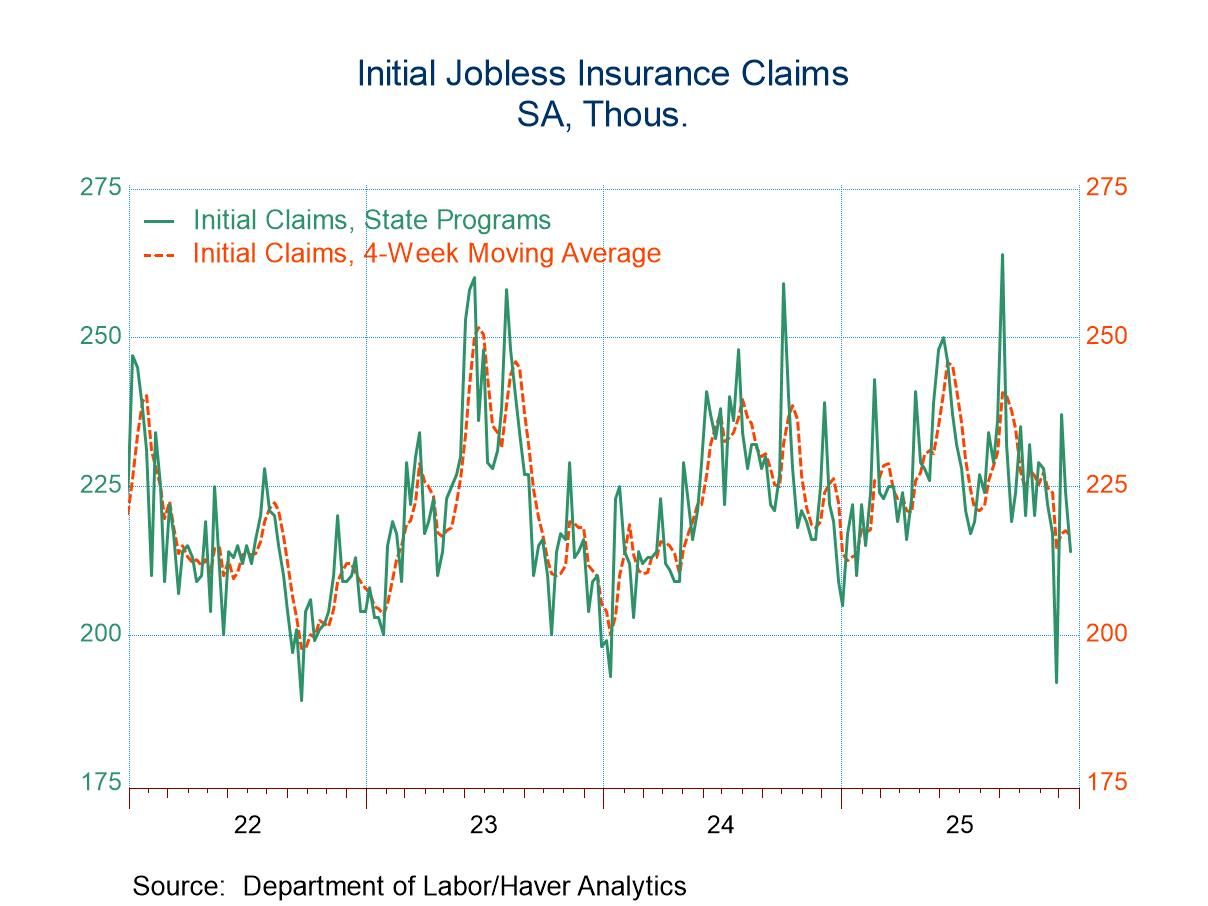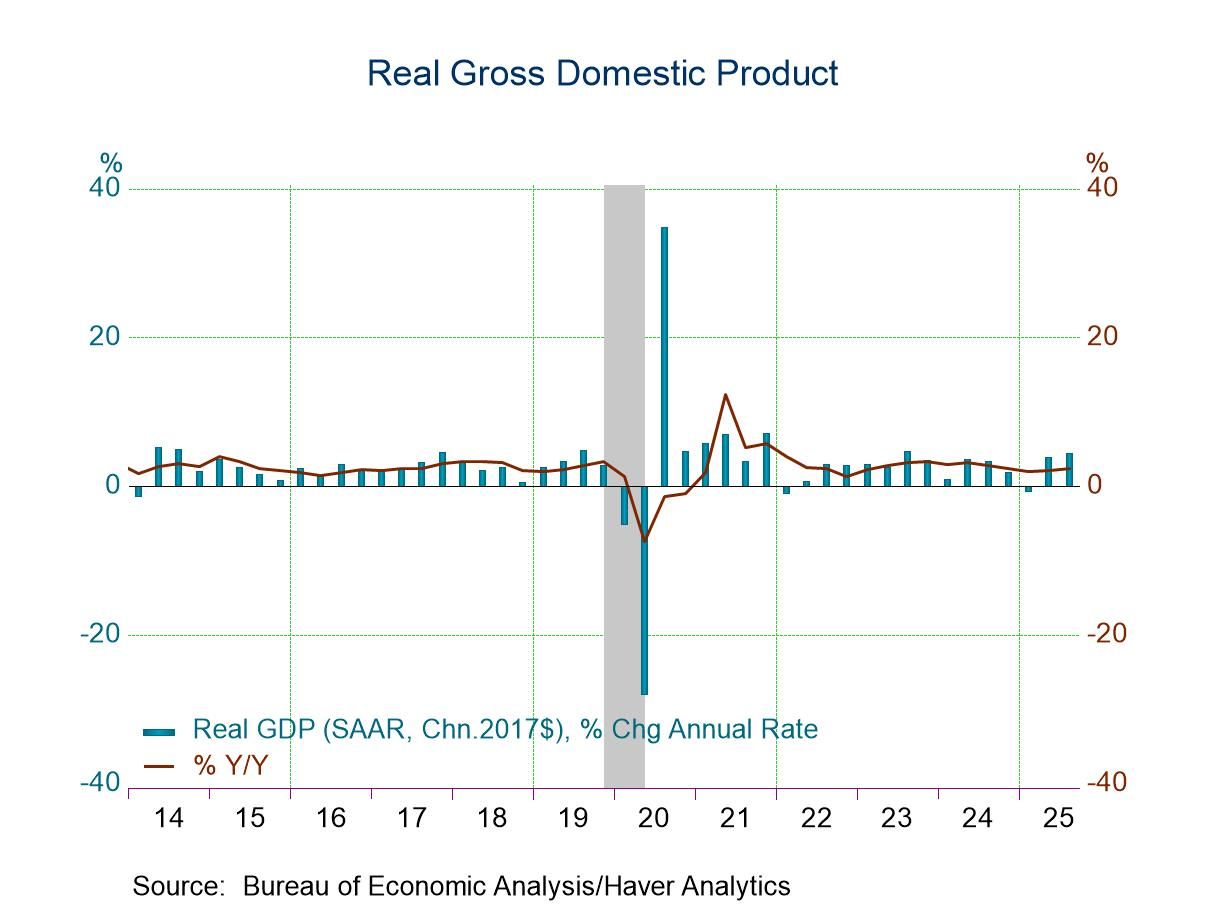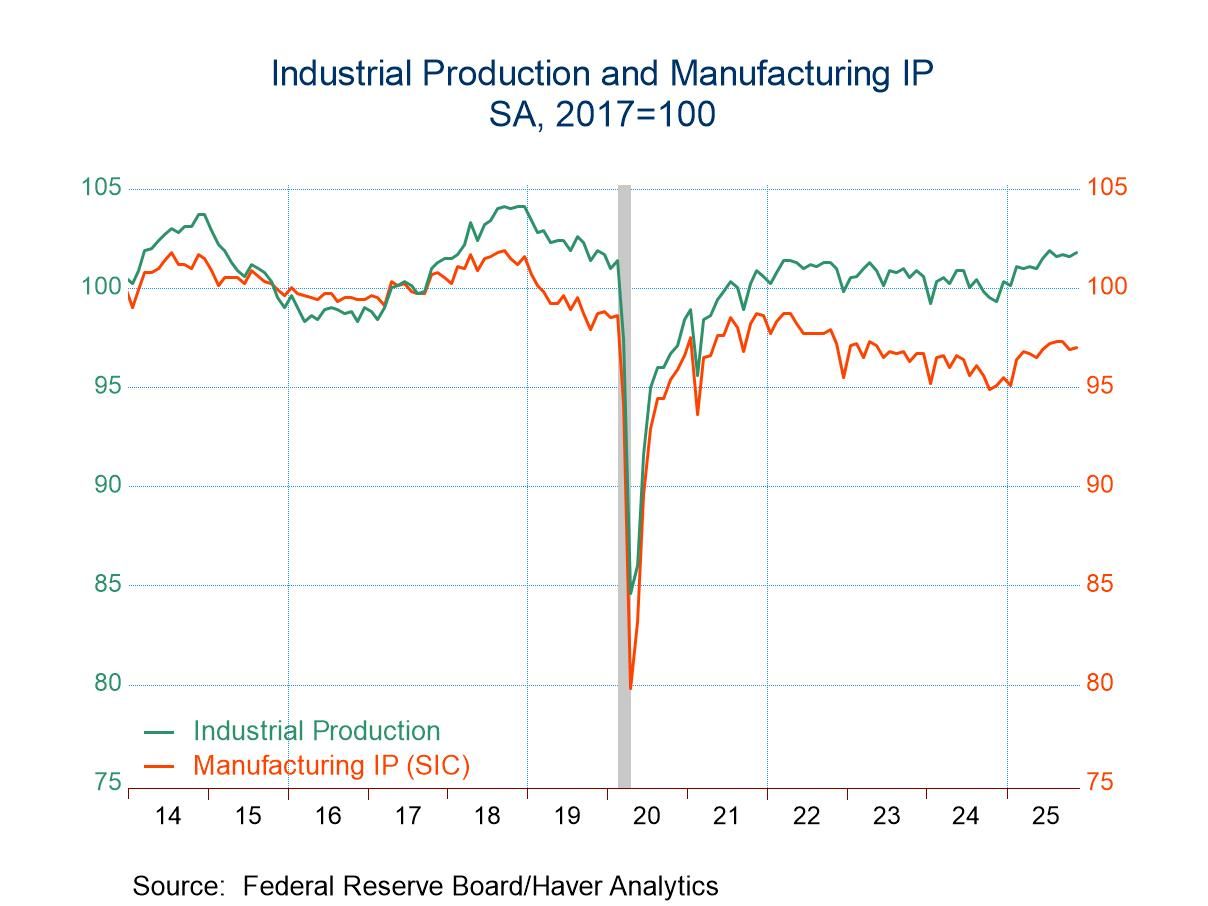U.S. Trade Deficit Sets Record in January
by:Tom Moeller
|in:Economy in Brief
Summary
- Decline in exports led by consumer goods.
- Imports increase broadly.
- Petroleum imports strengthen with higher prices.


The U.S. trade deficit in goods and services increased to $89.69 billion during January from $81.96 billion in December, revised from $80.73 billion. A deficit of $87.1 billion had been expected in the Action Economics Forecast Survey. Exports declined 1.7% (+15.4% y/y) in January and reversed December's 1.5% rise. Imports rose 1.2% (21.0% y/y) after increasing 1.7% in December.
The trade deficit in goods deepened to a record $107.57 billion in January after expanding to $100.67 billion in December. It compared to a $107.63 billion deficit in the advance report issued last week. Exports of goods fell 1.5% (+15.6% y/y). Nonauto consumer goods exports fell 13.6% (+19.1% y/y) in January. Auto exports weakened 5.1% (-1.8% y/y). Capital goods exports rose 2.4% (11.7% y/y). Industrial supplies & materials exports improved 0.8% (28.1% y/y). Exports of foods, feeds & beverages held steady (0.5% y/y).
Imports of goods increased 1.8% in January (19.9% y/y). Auto imports surged 5.1% (2.2% y/y). Nonauto consumer goods imports gained 0.9% (15.5% y/y). Capital goods imports improved 1.6% (15.2% y/y). Industrial supplies & materials imports increased 2.6% (45.3% y/y). Foods, feeds & beverage imports improved 8.6% (24.2% y/y).
Petroleum imports rose 2.1% (64.3% y/y) in January. The rise occurred as the price of crude oil increased to an average $69.22 per barrel. Nonpetroleum imports rose 1.8% (17.3% y/y).
The real (adjusted for price changes) trade deficit in goods deepened to a record $118.07 billion (chained 2012 dollars) in January from $111.70 billion in December. Real exports of goods fell 3.9% (+1.3% y/y) while real imports of goods edged 0.1% higher (9.2% y/y).
The surplus of trade in services eased to $19.2 billion in January. The surplus remained down from a high of $26.7 billion in January 2018. The value of services exports fell 2.3% (14.3% y/y) as travel exports weakened 20.4% (+56.8% y/y). Service imports weakened 2.0% in January (+26.2% y/y) including a 7.1% decline (+138.5% y/y) in travel imports.
The trade deficit with China eased to a seasonally adjusted $33.3 billion in January. Exports rose 8.5% (-10.9% y/y) while imports rose 0.3% (13.7% y/y). The trade deficit with Japan deepened to $7.1 billion as exports increased 1.7% (-0.2% y/y) and imports surged 20.0% (16.7% y/y). The goods trade deficit with the European Union deepened to $18.0 billion. Exports were little changed (23.9% y/y) and imports rose 4.2% (6.6% y/y).
The international trade data, including relevant data on oil prices, can be found in Haver's USECON database. Detailed figures on international trade are available in the USINT database. The expectations figures are from the Action Economics Forecast Survey in AS1REPNA.


Tom Moeller
AuthorMore in Author Profile »Prior to joining Haver Analytics in 2000, Mr. Moeller worked as the Economist at Chancellor Capital Management from 1985 to 1999. There, he developed comprehensive economic forecasts and interpreted economic data for equity and fixed income portfolio managers. Also at Chancellor, Mr. Moeller worked as an equity analyst and was responsible for researching and rating companies in the economically sensitive automobile and housing industries for investment in Chancellor’s equity portfolio. Prior to joining Chancellor, Mr. Moeller was an Economist at Citibank from 1979 to 1984. He also analyzed pricing behavior in the metals industry for the Council on Wage and Price Stability in Washington, D.C. In 1999, Mr. Moeller received the award for most accurate forecast from the Forecasters' Club of New York. From 1990 to 1992 he was President of the New York Association for Business Economists. Mr. Moeller earned an M.B.A. in Finance from Fordham University, where he graduated in 1987. He holds a Bachelor of Arts in Economics from George Washington University.






